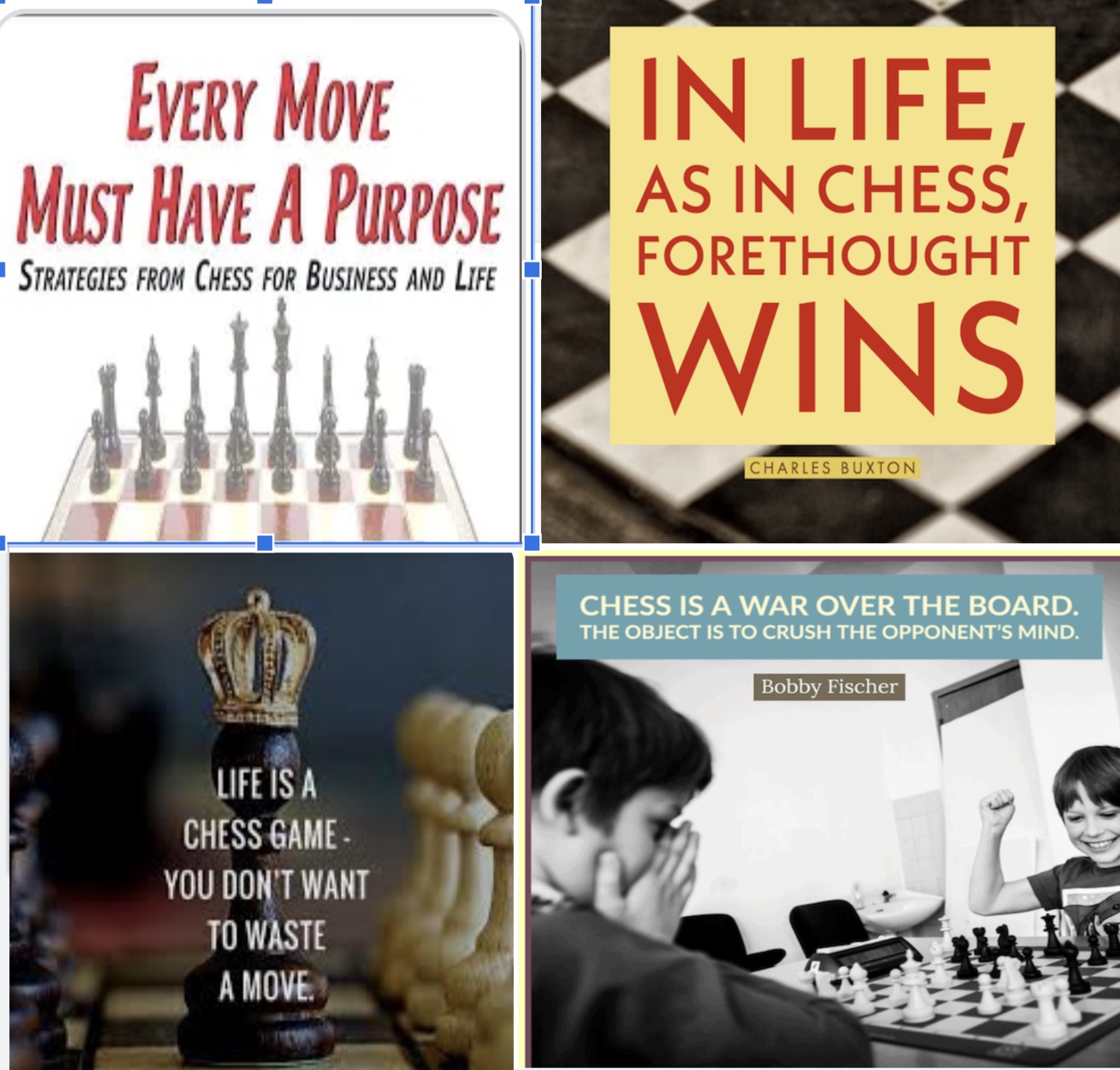
Strong chess-players consistently make PURPOSEFUL MOVES that are FOCUSED ON ACHIEVING THEIR OBJECTIVES. OBJECTIVES help the chess-player:
- Make moves with a strong purpose;
- Guide the thinking process in the right direction.
If the player does not keep the PLAN or objectives in mind, then there is a waste of a lot of time thinking aimlessly about ”stuff” that serves no purpose. On the other hand, when the player knows what to aim for then there is the necessary MOTIVATION TO SEARCH FOR THE BEST WAY TO IMPLEMENT THE PLAN.
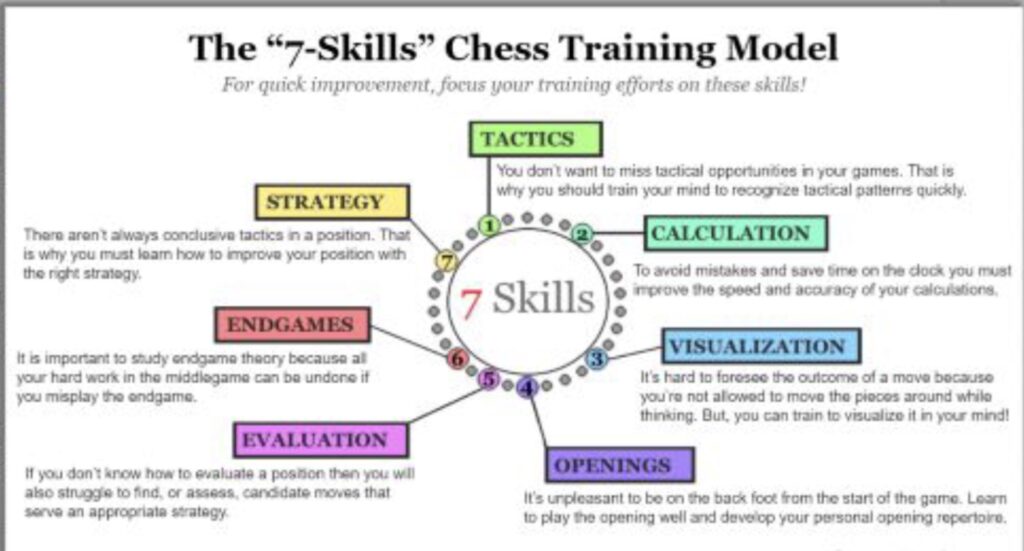
Just like a chess player, when a hitter steps to the plate, he/she should have a PLAN/APPROACH based on what he/she thinks the pitcher is going to do AND situational awareness (the score, how many outs, inning, where are the base runners, etc.).
This is way different than a hitter who is predictable; for instance, ”I always take until I have a strike” or ”I never swing at the first pitch” or ”I take all off-speed pitches until I have 2 strikes”, etc.
Being predictable gives the pitcher the advantage. Being predictable is a weakness your opponent will exploit. Instead, BE UNPREDICTABLE. BE FLEXIBLE. BE ABLE TO ADJUST TO THIS SITUATION. WIN THIS PITCH.
The best hitters have a plan on what the pitcher is going to do AND how he/she is going to COUNTERACT it — it’s like a chess match.
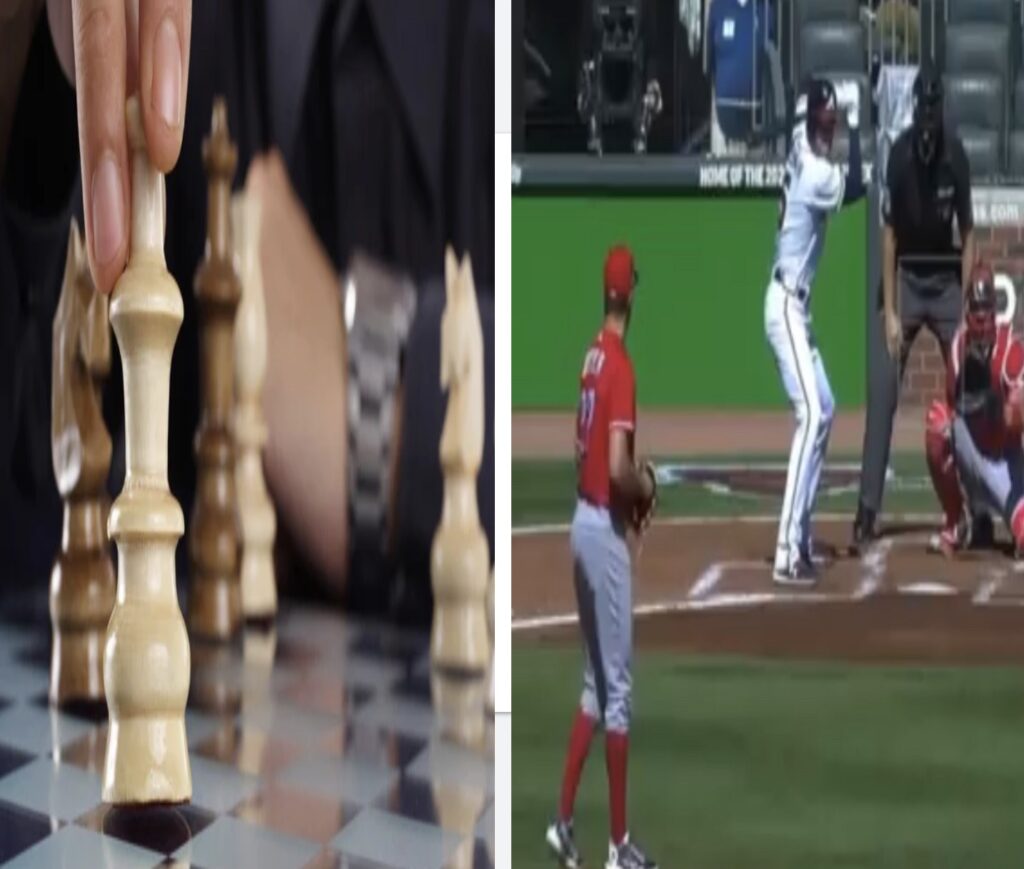
Great hitters are NOT PREDICTABLE. Pitchers cannot predict what the hitter is going to do.
There are NO TRENDS.
INSTEAD, the hitter has an idea on how the pitcher is going to pitch him/her and, thus knows beforehand what he/she is going to do and how he/she is going to counteract the pitcher’s move – it’s a chess match.
I contend that for every PITCH DESIGN that a pitcher comes up with, that the hitter should have a MOTOR PROGRAMMED SWING ADJUSTMENT to counteract each pitcher’s strategy.
Lately, I’ve seen lots of swings that rely on lots of SHOULDER TURN. BREAKING NEWS: if you primarily rely on shoulder turn to create force/power in your swing, the barrel will ”drag” and you will have ”big holes” and be predictable to the pitcher (the chess opponent).
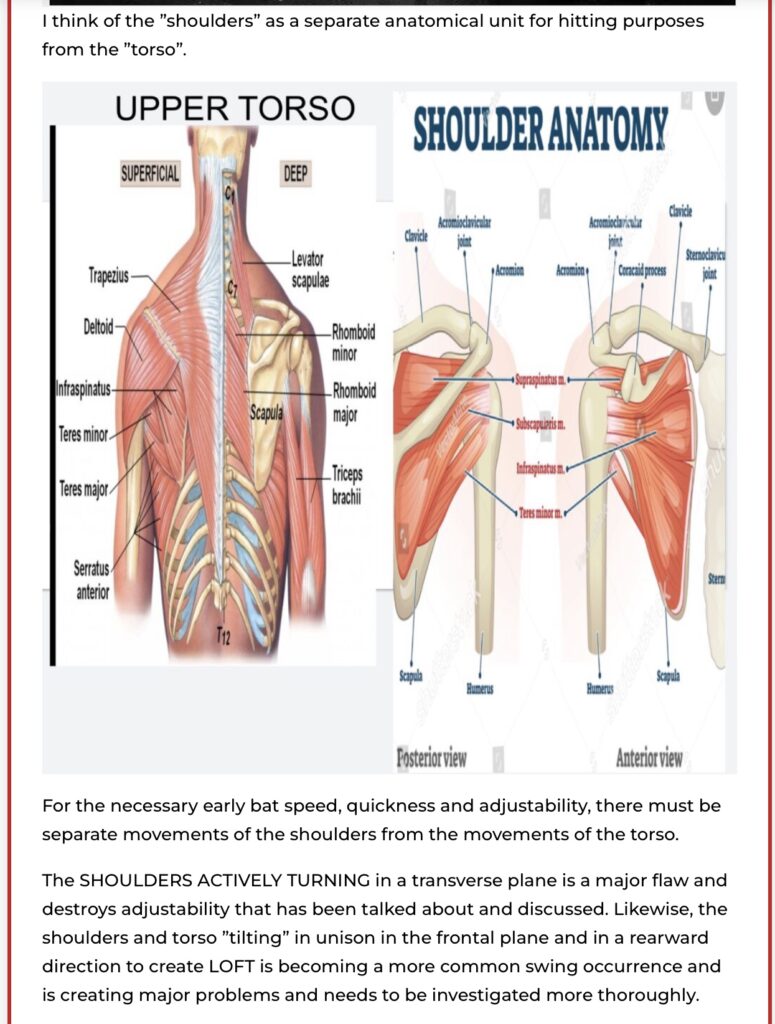
Below is a photo of Freddie Freeman getting his barrel “IN” — in position to launch — with ”simultaneous depth”. NO SHOULDER TURN.
It allows him IMPULSE CONTROL —
- to check his swing LATE”; or
- finish his swing and ADJUST TO CONTINUOUS PITCH BREAK;
- to get on plane ”THROUGH” the pitch rather than spinning off it or pulling across the pitch path because of excessive shoulder turn.
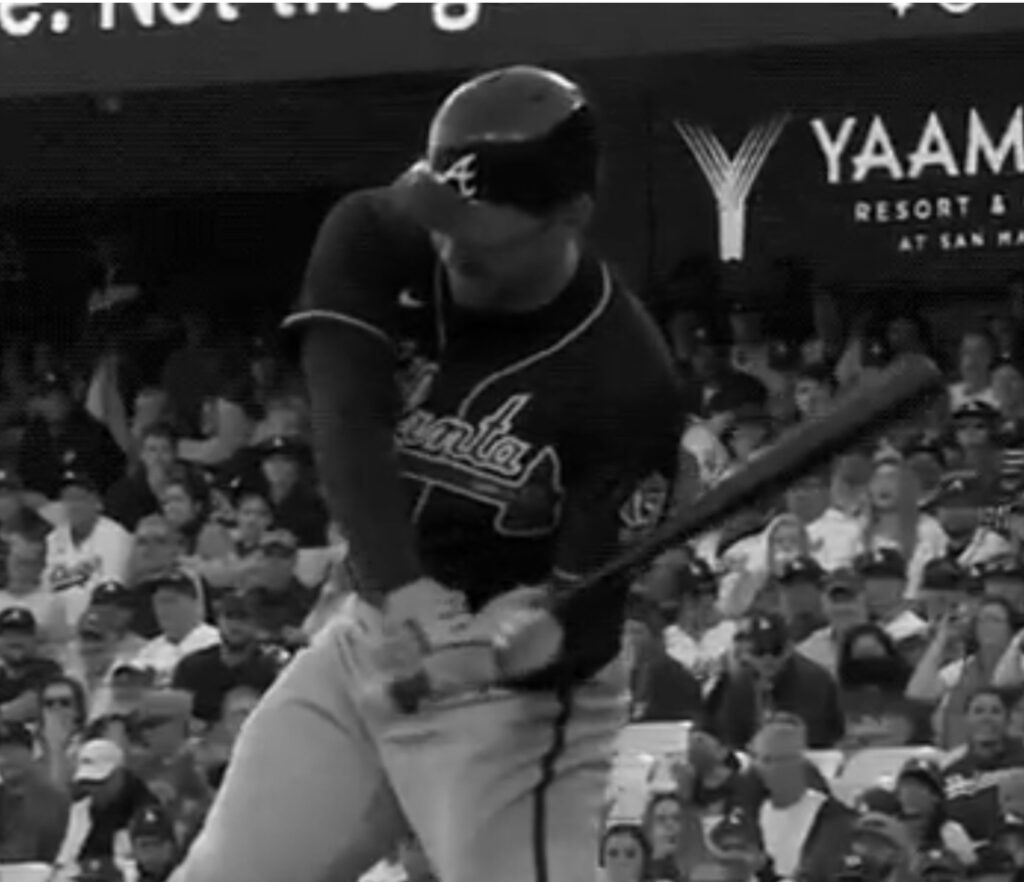
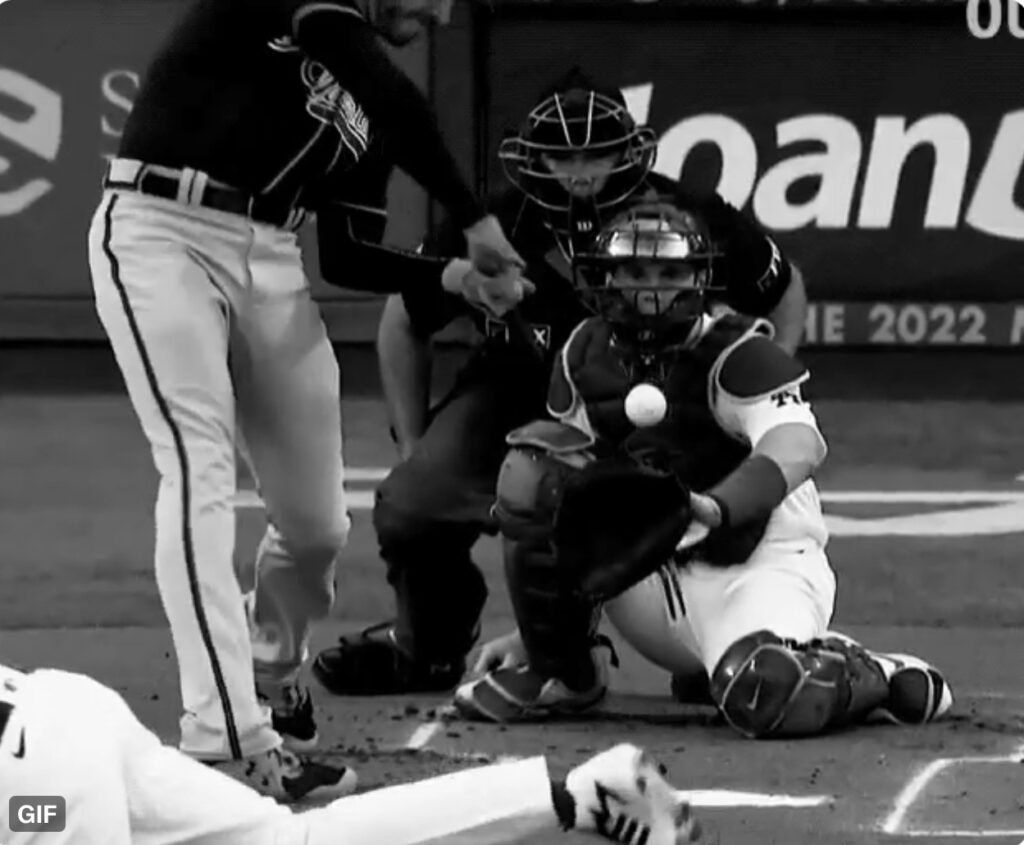
MOTOR PROGRAMMING IS A CHESS MATCH
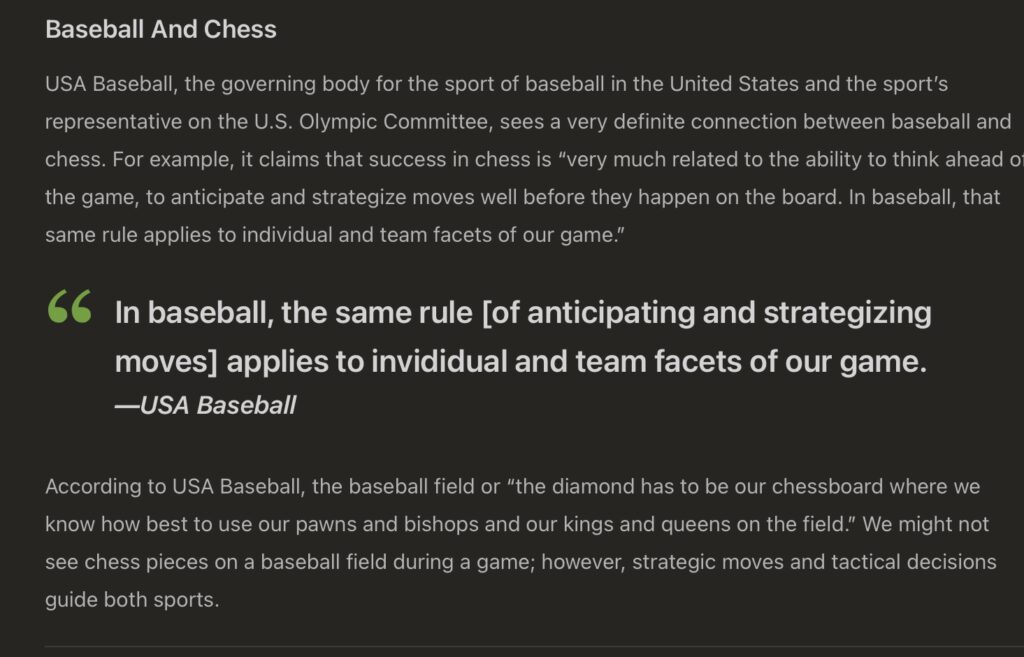
If a pitcher is ”pitching backwards”, changing linear speeds, & using lots of off-speed pitches in fastball counts, then the hitter can COUNTERACT that strategy or ”chess move” by going to the plate and LOOKING FOR OFF SPEED.
When a hitter takes that approach – LOOKING FOR OFF SPEED – then his/her IMPULSE CONTROL should have NO DELAY when the off-speed pitch shows up. When the hitter GETS THE PITCH HE/SHE is looking for, then he/she should be PERFECTLY ON TIME.
If the hitter is NOT PERFECTLY ON TIME, then he CHECKS OUT —
- “NOPE, I’m not on time;
- I have more of this at bat remaining;
- I’m not worried about going into a deeper count;
- I’m comfortable hitting with 2 strikes;
- I’m not scared of punching out;
- this is going to be a battle;
- GO-GO-GO-NOPE;
- this is NOT the ONE I’m looking for;
- do NOT hit that pitch;
- in the middle of the swing, I SEE something that tells me NOPE”.
It’s situational AWARENESS based on the skills of PITCH RECOGNITION, IMPULSE CONTROL & MOTOR PROGRAMMING.
A hitter’s approach can change throughout the at bat; but also can stay the same. It’s based on what is going on with the chessboard: what’s the score, what’s the count, where are the runners, how many outs, does the pitcher have any dominant pitch that can beat me, etc.?
IMPULSE CONTROL & MOTOR PROGRAM stays locked in for what the hitter THINKS HE/SHE CAN BEAT THE PITCHER WITH.
A good at bat is:
- getting a good swing on a pitch you anticipate,
- SEEING THE PITCH & recognizing it,
- being on time with YOUR PITCH,
- getting the BARREL on the ball with force & accuracy,
- having a plan & executing it consistently.
GET YOUR PITCH
When pitcher’s make their ”chess move” and try to use pitch design to cross you up, then:
- hitters use their experience, practice preparation & database of pitches;
- hitters must recognize pitch patterns and pitch ”pairing”;
- hitters must connect the dots early;
- hitters must determine WHETHER TO LAY OFF THE CHASE PITCH;
- hitters decide to STOP THEIR SWINGS;
- hitters use IMPULSE CONTROL to transfer the FORCE;
- hitters decide to stay on the secondary pitch that hangs or misses in their sweet spot;
- hitters read & recognize the pitch EARLY and ACCURATELY; and
- hitters make the best swing decisions & adjustments.
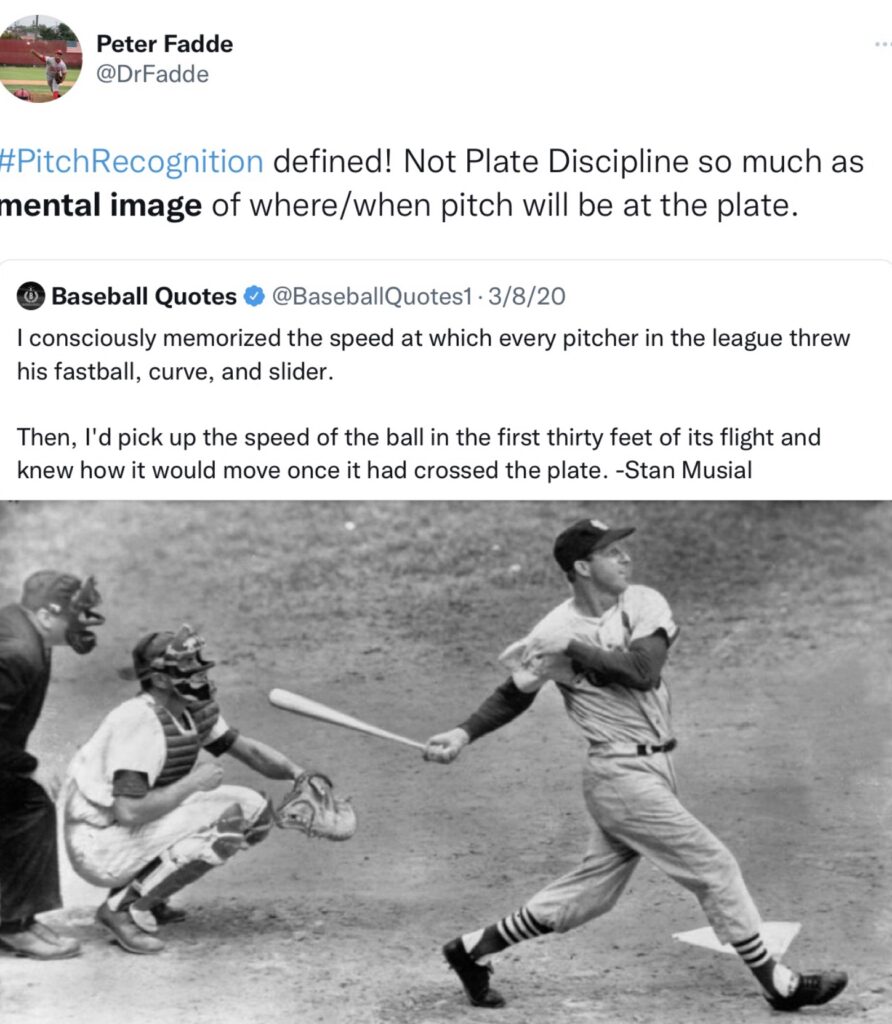
Make the diamond your chessboard! Win the battle against the pitcher of strategic moves and tactical decisions. WIN EACH PITCH!
PURSUE EXCELLENCE & WIN THIS PITCH!
About the Author
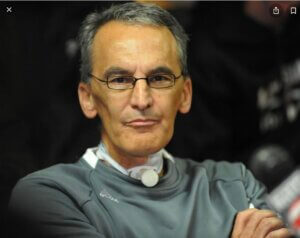
Mike Lotief coached 17 successful years as either the head softball coach or co-head softball coach with his wife Stefni Whitton Lotief at the University of Louisiana from 2002-2017 with an overall coaching record of 731-176 (80.6 winning percentage). Every season, the Ragin Cajuns softball team advanced to the NCAA tournament and also advanced to three (3) Women’s College World Series (2003, 2008, 2014) and from 2012-2016 advanced to five (5) straight NCAA Super Regionals. Coach Lotief produced over 40 All American selections and his 2017 team lead the nation in scoring and was ranked in the Top 10 in home runs, slugging percentage, on base percentage.
The coach is a cancer survivor (twice) and was the first person in the U.S. to receive the Pro Trach device. Mike and Stefni spearheaded and raised the funding to build the new softball stadium in 2009 and the new softball indoor hitting facility in 2015. They are proud parents to Chelsea, who played softball and graduated from the Univ. of Louisiana in 2018, and Andrew, who is a junior at Louisiana studying Mechanical Engineering.
Previous Articles in this Series
- The Mental Swing Attractors: Failure Cannot Break You (Nov. 11, 2021)
- Training Insights: “Swing Attractors” by Coach Mike Lotief… the Flaws of Pelvic Loading (Nov. 9, 2021)
- The Mental Swing Attractors: Push Yourself… You Don’t Have to Be #1 to BE #1! (Nov. 4, 2021)
- Training Insights: “Swing Attractors” by Coach Mike Lotief… Pelvis Loading, Part 2—The Planes of Movement (Nov. 2, 2021)
- The Mental Swing Attractors: Remove the Rope from Your Ankle & Get Rid of the Limiting Beliefs! (Oct. 28, 2021)
- Training Insights: “Swing Attractors” by Coach Mike Lotief… Pelvis Loading, Part 1—It’s All in the Hips (or Somewhere Deep Below) Oct. 26, 2021
- The Mental Swing Attractors: Champions are Developed by Devotion & Discipline! (Oct. 21, 2021)
- Training Expertise: “Swing Attractors”… the Secrets of Power Hitting by Coach Mike Lotief (Oct. 19, 2021)
More About Mike Lotief
- Why Michael Lotief is a Legendary Coach? by Jay Patel
- The Secret To Michael Lotief’s Success. By Jay Patel
- Michael Lotief Fights for Rajin’ Cajuns by Graham Hays ESPN
- Michael Lotief: Taking His Sport to New Heights by Neha Kapoor
- For the Love of the Game: A Look at Ragin’ Cajun Softball’s Power Couple
- How Louisiana-Lafayette’s Michael Lotief Develops Hitting Gems by Graham Hays ESPN
